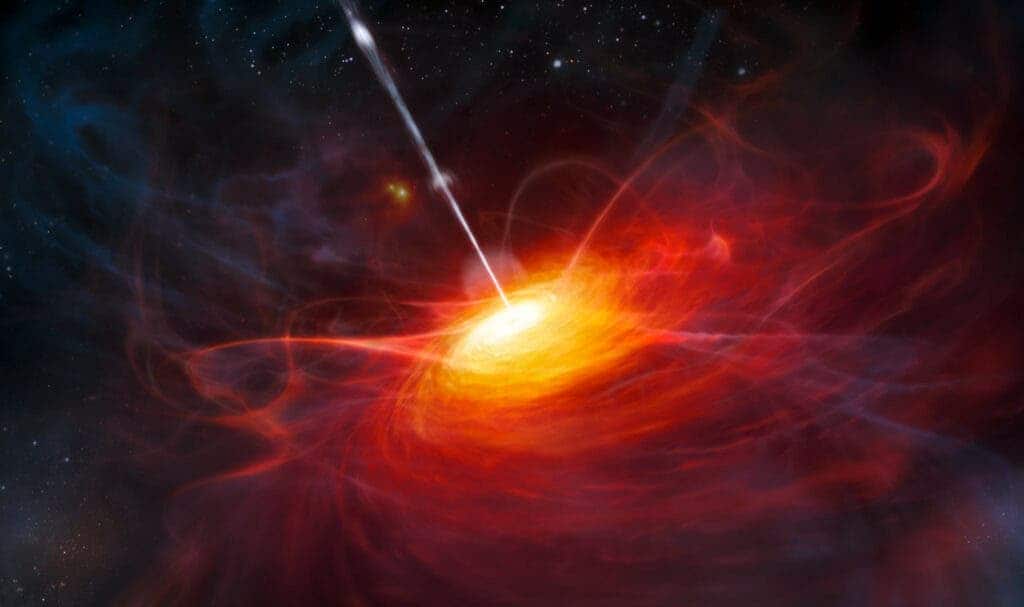

Astronomers have come across a monstrously large black hole with a gigantic appetite. With each passing day, the insatiable vacuum known as J2157 consumes gas and dust equivalent in mass to the sun, making it the fastest growing black hole in the universe.
The absolute scale of J2157 is almost unfathomable, but we can still try to fix some numbers for it.
According to Christopher Onken, an astronomer at Australia’s National University who was part of the team that originally discovered the object in 2019, J2167 is 8,000 times more massive than the supermassive black hole at the heart of the Milky Way. That is equivalent to 34 billion times the mass of the Sun.
For Sagittarius A *, the Milky Way’s supermassive black hole, to reach a similar size, it would have had to gobble up two-thirds of all the stars in the galaxy.
For their new study, astronomers turned to ESO’s Very Large Telescope in Chile for a more accurate assessment of the black hole’s mass. The researchers already knew they were dealing with a black hole of epic proportions, but the final results surprised everyone.
“We knew we were in a very massive black hole when we realized its rapid growth rate,” said team member Dr. Fuyan Bian, ESO staff astronomer.
“The number of black holes they can swallow depends on how much mass they already have. So, for it to be devouring matter at such a high rate, we thought it could become a new record holder. And now we know.
Although black holes cannot be captured directly because they don’t let light out, J2157 is actually classified as a quasar or “quasi-stellar radio source”: extremely bright objects powered by black holes at least a billion times larger than our Sun .
The bright signal of the quasar is made up of dust and gas particles that accumulate around the edge of the supermassive black hole that accelerate at almost the speed of light. Practically, the black hole acts as an extremely powerful natural particle accelerator.
Fortunately for us, the black hole is billions of light years away. But this also means that astronomers are measuring J2157’s gravitational influence as it appeared in the distant past when the universe was still very young.
“We are looking at it at a time when the universe was only 1.2 billion years old, less than 10 percent of its current age,” said Dr. Onken.
“It is the largest black hole ever weighed in this early period of the Universe.”
Since then, J2157 probably grew even further, perhaps merging with various other black holes throughout the eons.
“With such a huge black hole, we are also excited to see what we can learn about the galaxy it is growing in,” said Dr. Onken.
“Is this galaxy one of the giants of the early Universe, or did the black hole swallow an extraordinary amount from its surroundings? We will have to keep digging to solve that. ”
The findings appeared in the Monthly notices from the Royal Astronomical Society.